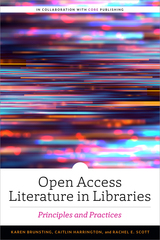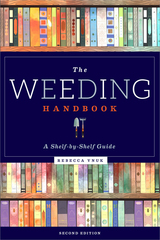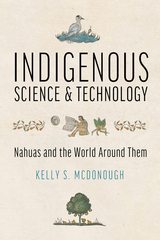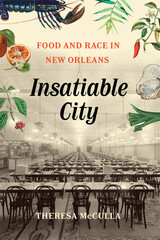
Packed with discussion questions, activities, suggested additional references, selected readings, and many other features that speak directly to students and library professionals, Gregory’s Collection Development and Management for 21st Century Library Collections is a comprehensive handbook that also shares myriad insightful ideas and approaches valuable to experienced practitioners. This new second edition brings an already stellar text fully up to date, presenting top-to-bottom coverage of
- the impact of new technologies and developments on the discipline, including discussion of e-books, open access, globalization, self-publishing, and other trends;
- needs assessment, policies, and selection sources and processes;
- budgeting and fiscal management;
- collection assessment and evaluation;
- weeding, with special attention paid to electronic materials;
- collaborative collection development and resource sharing;
- marketing and outreach;
- self-censorship as a component of intellectual freedom, professional ethics, and other legal issues;
- diversity and ADA issues;
- preservation; and
- the future of the field.
Additional features include updated vendor lists, samples of a needs assessment report, a collection development policy, an approval plan, and an electronic materials license.

Technical Services Quarterly declared that the third edition “must now be considered the essential textbook for collection development and management … the first place to go for reliable and informative advice." For the fourth edition expert instructor and librarian Johnson has revised and freshened this resource to ensure its timeliness and continued excellence. Each chapter offers complete coverage of one aspect of collection development and management, including numerous suggestions for further reading and narrative case studies exploring the issues. Thorough consideration is given to
- traditional management topics such as organization of the collection, weeding, staffing, and policymaking;
- cooperative collection development and management;
- licenses, negotiation, contracts, maintaining productive relationships with vendors and publishers, and other important purchasing and budgeting topics;
- important issues such as the ways that changes in information delivery and access technologies continue to reshape the discipline, the evolving needs and expectations of library users, and new roles for subject specialists, all illustrated using updated examples and data; and
- marketing, liaison activities, and outreach.
As a comprehensive introduction for LIS students, a primer for experienced librarians with new collection development and management responsibilities, and a handy reference resource for practitioners as they go about their day-to-day work, the value and usefulness of this book remain unequaled.





- the origins and growth of OA, how to define it, and some of the ways in which librarians have made connections to OA;
- where OA diverges from the historic role of library collection development policies and ways to bring OA into alignment with an institution's collection development principles and practices;
- real-world examples of how libraries have supported or integrated OA into their collections, including strategies for selecting and activating OA titles and collections for inclusion, offering open educational resources (OER) to students, samples of collection management workflows, and ideas for aligning collections with institutional repositories or other Green OA initiatives;
- guidance on financially supporting OA content, initiatives, and platforms;
- how OA publishing does and does not harmonize with diversity, equity, and inclusion initiatives; and
- tips for using ongoing assessment and evaluation to continuously support the library’s path to an open future.

"Manages to be a thorough and informative source on weeding library collections and yet also an easy, engaging read ... Recommended." That rave review from Technicalities sums up the acclaim and appeal of this bestselling resource’s first edition. Now Vnuk has revised and updated her text to keep pace with libraries’ longer-term shifts in collection development and access, such as a growing emphasis on digital collections and managing duplicate physical materials. She demonstrates how weeding helps a library thrive by focusing its resources on those parts of the collection that are the most useful to its users. Walking collections staff through the proverbial stacks shelf by shelf, this book
- includes a new “Tales from the Front” feature, providing real-life case studies of librarians working on weeding projects;
- explains why weeding is important for a healthy library and how it can positively affect library budgets;
- systematically walks readers through a library's shelves, with recommended weeding criteria and call-outs in each area for the different considerations of large collections and smaller collections;
- offers easily adaptable, updated sample development plans which reflect the latest thinking in collection development;
- advises readers on weeding problematic materials, such as those that include racist themes and depictions;
- presents updated and expanded guidance on special considerations for youth collections;
- addresses reference, media, magazines and newspapers, e-books, and other special materials;
- shares guidance for determining how to delegate responsibility for weeding, plus pointers for getting other staff members on board; and
- gives advice for educating the community about the process, how to head off PR disasters, and what to do with weeded materials.

READERS
Browse our collection.
PUBLISHERS
See BiblioVault's publisher services.
STUDENT SERVICES
Files for college accessibility offices.
UChicago Accessibility Resources
home | accessibility | search | about | contact us
BiblioVault ® 2001 - 2024
The University of Chicago Press









